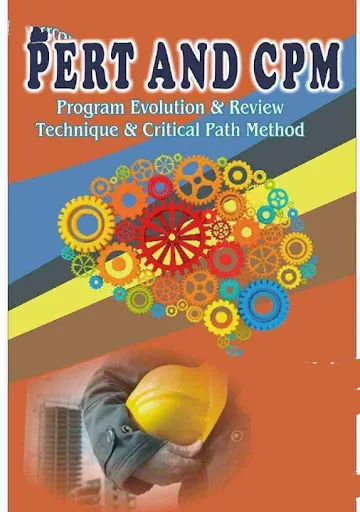What's the Differences Between PERT and CPM ?
Abstract:
PERT (program evaluation and review technique) and CPM (critical path method) are both project management techniques that show the sequence of project activities. The main difference between them is their focus and application:
Keywords
PERT (program evaluation and review technique), CPM (critical path method), Planning, Organizing, Scheduling, Control Strategies
Learning Outcomes
After undergoing this article you will be able to understand the differences between PERT and CPM
PERT
A probabilistic model that focuses on minimizing project duration. It's used when the project's path is unclear and time estimates are uncertain, such as in research and development projects. PERT incorporates planning, organizing, scheduling, and control strategies. It uses network diagrams to represent the project structure, with arrows defining the sequence of activities and events. PERT analysis focuses on the arrows, not the nodes, and each event or milestone is joined by an arrow.
CPM
A deterministic model that focuses on time-cost trade-offs and sticking to the schedule. It's used for projects with well-defined processes and repetitive tasks, such as construction and manufacturing. CPM is a statistical technique that assigns a start and end time to a project and focuses on scheduling and control. It uses precedence or arrow diagramming methods to represent the project structure, with the path defining the start to finish. CPM can help project managers develop realistic schedules, prioritize tasks, and identify potential delays early.
The choice between PERT and CPM depends on the nature of the project and its specific requirements. In some cases, PERT and CPM can be used together to manage complex projects.
Differences between PERT and CPM
| Aspect | PERT (Project Evaluation and Review Technique) | CPM (Critical Path Method) |
| Abbreviation | PERT stands for Project Evaluation and Review Technique | CPM stands for Critical Path Method |
| Definition | A probabilistic tool for managing uncertain activities of a project | A deterministic tool for managing well-defined activities of a project |
| Orientation | Event-oriented, focusing on milestones and events | Activity-oriented, focusing on tasks and activities |
| Model Type | Probability-based, dealing with uncertainty in task durations | Deterministic, with fixed time estimates |
| Focus | Emphasises time estimation and meeting time targets | Emphasises time-cost trade-offs |
| Precision | Suitable for projects requiring high precision in time estimation | Suitable for projects where reasonable time estimation is enough |
| Sustainability | Suitable for projects with significant research and development | Suitable for industrial and construction projects |
Both PERT and CPM offer unique advantages that enhance project management effectiveness. PERT excels in handling uncertainty and scheduling tasks, making it ideal for research and development projects. CPM, on the other hand, focuses on identifying and managing critical tasks, ensuring efficient long-term planning and resource allocation. When combined, these two project management techniques provide a robust framework for comprehensive project planning, project scheduling,, and control.
FAQs
Q. What are the limitations of PERT and CPM?
Ans. :
While this tool can be very useful, the majority of respondents agreed that it has limitations, such as; PERT/CPM can become ineffective and difficult to manage if it is not well-defined and stable for active control of a project; PERT/CPM requires frequent updating and revising of calculations.
References
A Guide to the Project Management Body of Knowledge
Author: Project Management Institute, Mohammed Ahmad S Al-Shamsi
Project Management Absolute Beginner's Guide
Author: Greg Horine
Project Management for the Unofficial Project Manager
Author: Suzette Blakemore, Kory Kogon
Scrum: The Art of Doing Twice the Work in Half the Time
Author: Jeff Sutherland
The Lazy Project Manager: How to be Twice as Productive and Still Leave the Office Early
Author: Peter Taylor
Getting Things Done
Author: David Allen
Project Management for Non-Project Managers
Author: Jack Ferraro
The Five Dysfunctions of a Team
Author: Patrick Lencioni
Agile Project Management with Scrum
Author: Ken Schwaber
Strategic Project Management Made Simple: Practical Tools for Leaders and Teams
Author: Terry Schmidt
The fast forward MBA in project management
Author: Eric Verzuh
Project Management: Case Studies
Author: Harold Kerzner
Agile Project Management For Dummies
Author: Mark C Layton, Steven J. Ostermiller
Project Management for Humans: Helping People Get Things Done
Author: Brett Harned
The Deadline: A Novel About Project Management
Author: Tom DeMarco
Agile Practice Guide
Brilliant Project Management
Author: Stephen Barker, Rob Cole
Doing Agile Right: Transformation Without Chaos
Author: Darrell Rigby, Steve Berez, Sarah Elk
Project Management JumpStart
Author: Kim Heldman
Project Management: A Systems Approach to Planning, Scheduling, and Controlling
Author: Harold Kerzner
The Art of project Management
Alpha Project Managers: What the Top 2% Know That Everyone Else Does Not
Author: Andy Crowe
Advanced Multi-project Management: Achieving Outstanding Speed and Results with Predictability
Author: Kathleen M. Austin, Gerald I. Kendall

Comments
Post a Comment
"Thank you for seeking advice on your career journey! Our team is dedicated to providing personalized guidance on education and success. Please share your specific questions or concerns, and we'll assist you in navigating the path to a fulfilling and successful career."